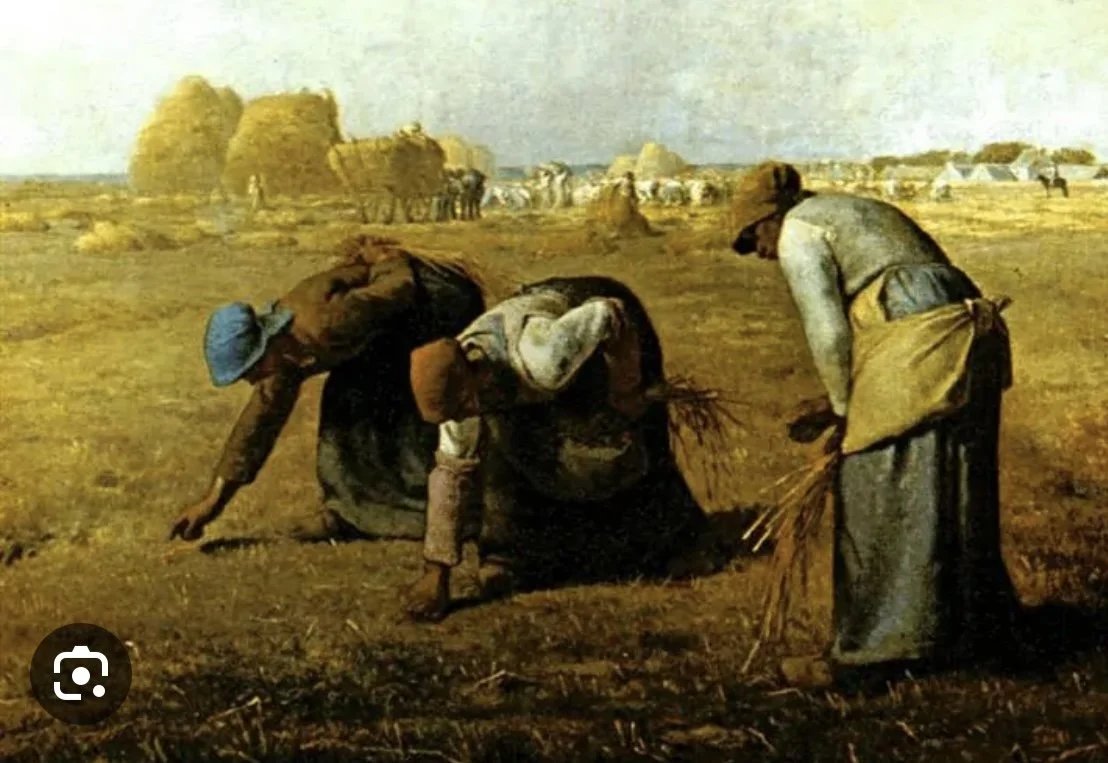Madame Pommery and The Gleaners
Do you know this well-known painting by JEAN-FRANCOIS MILLET? Do you like it? There is so much that I didn’t know about it. I didn’t have a clue. I thought it was about gleaning. But turns out I was wrong. It’s about real power. And how it’s connected with Madame Pommery.
“It is the treating of the commonplace with the feelings of the sublime that gives to art its true power.” Jean-Francois Millet
So what does this painting, The Gleaners, have to do with the commonplace and the possibly sublime, Champagne, and the recently released and wonderful novel by Rebecca Rosenberg, Madame Pommery?
“One of the founders of the Barbizon school, Jean-Francois Millet is celebrated for his depictions of peasant life in rural France (specifically in Fontainebleau Forest near the village of Barbizon). The movement sought to return to nature in art and for that reason most of its members focused on depicting the effects of changing seasons and of transient light on the landscapes. In contrast to other Barbizon artists, Millet addressed the theme of the rural working class as one being closest to nature, as opposed to the bourgeoisie and its urban lifestyle.”
Even though Madame Pommery is credited for creating something sublime, the first dry champagne, which tends to be a product enjoyed by the wealthy, she bought this painting, The Gleaners, at the end of her life. It was then that she solidified her compassion for the commonplace laborers that were in essence responsible for the work involved in bringing her dreams of creating such a sublime dry Champagne into reality.
Here’s what Liana Vardi, professor of history and specializes in France, intellectual life in the eighteenth century, the relationship between the arts and sciences, the perception of nature and of the rural world had to say about the painting and Madame Pommery:
“It was announced less than a week later that Champagne maker Jeanne-Alexandrine Louise Pommery had acquired the piece, which silenced gossip on her supposed financial issues after leaving her grapes on the vines weeks longer than her competitors.”
At Madame Pommery's death in 1891, and following the conditions of her will, the painting was donated to the Louvre. It now resides in the Musée d'Orsay in Paris.
Why did this controversial painting, The Gleaners create such an uh, a controversy? The Gleaners made the aristocracy nervous. They despised it. It shocked them. Monarchies were being toppled no fewer than ten years prior to this. These women were seen as a representation of poverty. They were staring at the ground. They seem to be being held down. They embodied an animal force deeply absorbed by a painstaking task. The contrast between wealth and poverty, power and helplessness, male and female spheres is forcefully rendered. The aristocracy saw a brewing of riots. The women hold a meager handful of scraps in their hands while behind them is pictured an abundance of gathered crops but to which they are not invited to partake.
The painting is also the subject of another one of my favorite French female artists and her studies, Agnes Varda, click the link here to watch a trailer of her documentary film, The Gleaners and I. I love this film. And I have gleaned, in Paris, but now I have an expanded view of the commonplace and the sublime, and that is the story I want to leave you with.
It’s the story of Madame Pommery, a woman who doesn’t listen well to what others tell her to do. Instead she listens with her heart, and does what she thinks is best. LIke secretly excavating the the champagne caves under the city dump, and then when the Prussians invade, she uses her secret wine caves to house the French resistance fighters. But don’t listen to me, read Madame Pommery. her story is so well retold by Rebecca Rosenberg. Please visit her website to learn more about her historical books about glorious women of the past, and to read her novel about Madame Pommery.
And if you’d like to get in on the gleaning thing, please visit this map of gleaning and food recovery organizations in the US.
